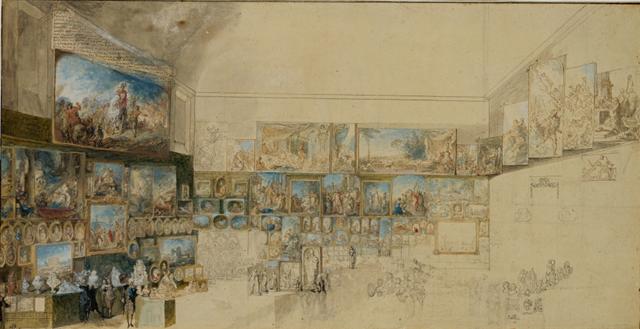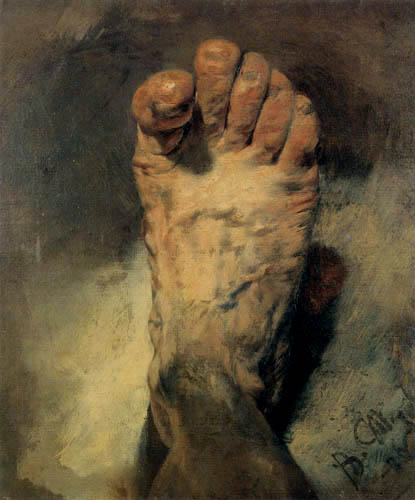|
||
|
gabriel jacques saint-aubin's (1724-1780) extraordinary productivity was regarded by his contemporaries as neurotic, perverse, or unhealthy. greuze even spoke of "priapism." saint-aubin drew as if afflicted by an itch, and people tired of seeing him drawing "all the time and everywhere". he was a passionate and unconventional observer of the sights of the paris streets and of the social scene. in his many drawings he combined pencil, black and red chalk, bistre, ink and watercolour to create dazzling spontaneous effects. he drew incidents that struck him as he wandered the streets, or entertainments that he attended. he recorded them, noting dates and times, in sketchbooks or sometimes in the margins and blank pages of printed books that he was carrying. finally, he earned a soubriquet but that he belonged to painting is borne out by the many sales catalogues in whose margins he sketched, with an incomparable gift for synthesis, the pictures sold before his eyes during the auction. he went regularly to the salon exhibitions of the academie royale and to art sales, covering the margins and flyleaves of his sale catalogues and Salon livrets with tiny sketches of works of art and the passing scene. one hundred of these illustrated catalogues were among his effects when he died. the catalogue of the mariette sale alone contains 1.200 such sketches. according to the biography, written after painter's death by his older brother, gabriel saint-aubin in his lifetime executed around one-hundred thousand images.  "the salon of 1765", (c.1765), black pencil, pen, black ink, gray wash, watercolour |
||
|
|


